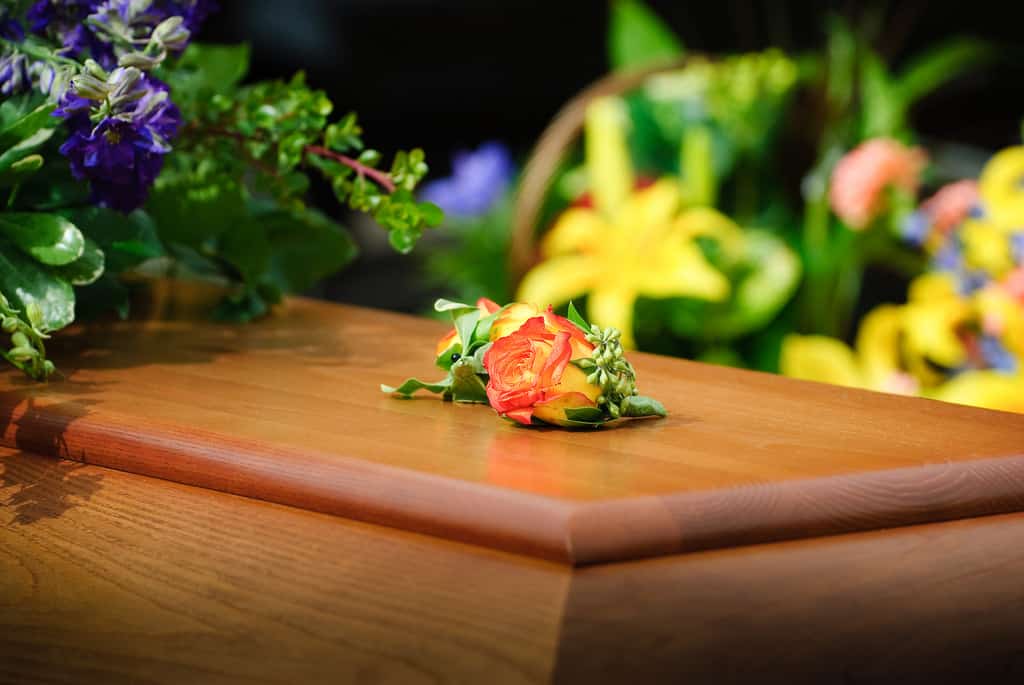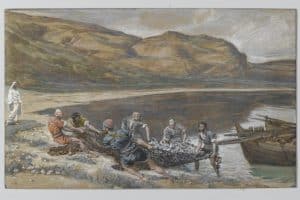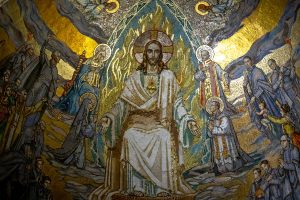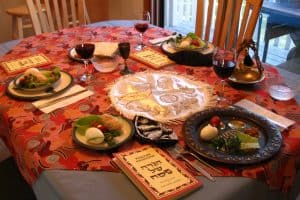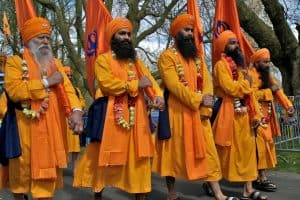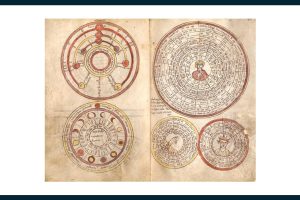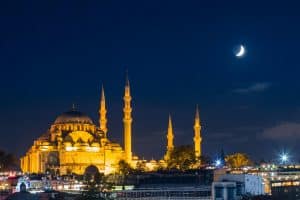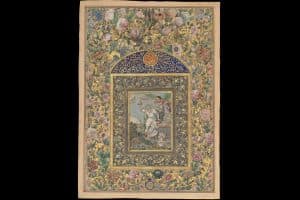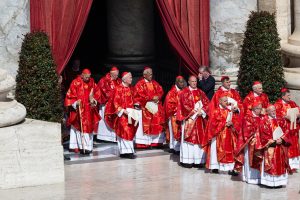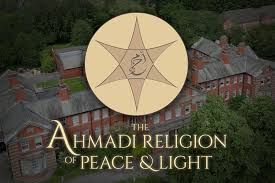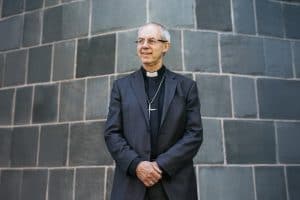by Jennifer Uzell
Historically, religious funerals mostly aimed to help the deceased in their passage to the next life. This continues to be the case, but in modern times emphasis has shifted towards comforting the bereaved, particularly within Christian traditions.
Introduction
The purpose of funeral rituals varies between religions and is dependent on time and place. Historically the purpose of most religious funerals was to aid the deceased in their passage to the next life, and this remains an important factor for many.
In more recent times, and in more secular funerals, the emphasis has shifted towards providing comfort and support for the bereaved. This also tends to be true in Christian, and particularly Protestant funerals.
Over the last few decades there has been a shift away from Christian funerals towards humanist or civil funeral celebrants, particularly in England. The UK has, compared with most other countries, very few restrictions concerning what may be done with human cremated remains.
Buddhism
There are no universally agreed death or funeral rites prescribed in Buddhism, and Buddhists often follow the common tradition in the country they are living in. Particularly for British converts to Buddhism (rather than British Buddhists from immigrant families) funerals are most likely to take the form of a cremation at the local crematorium.
One of the most famous (or infamous) forms of Buddhist death ritual is the Tibetan Sky Burial (or Bird Scattering). The deceased is staked out on a mountain to be eaten by vultures and other scavengers.
If vultures are quick to come this may be taken as an indication that the person is spiritually advanced and will have an easy passage. Using one’s own body to feed the wildlife is also seen as an act of great dana (charity) showing the Buddhist virtues of metta (loving kindness) and karuna (compassion). This will also aid the person in achieving nibbana.
Tibetan Buddhists may also read the Bardo Thodol (sometimes referred to as the Tibetan Book of the Dead) to the dying, and for a period of time following death. This is a set of teachings designed to help the dead person accept and adapt to their death and to successfully negotiate the Bardo; the state between death and either achieving nibbana or becoming reborn.
Buddhists may also practise cremation, water burial or inhumation depending on local customs.
Christianity
Practice varies widely between different Christian denominations and around the world.
In some Orthodox traditions services are held 8 days, 30 days and one year after death
Protestant churches tend to emphasise the distinction between body and soul and the assumption is often that the soul will proceed to heaven while the body is of little importance and can be permanently disposed of (eg through cremation).
Roman Catholicism and the Orthodox Churches still strongly favour burial over cremation due to a belief in the physical resurrection of the body.
The Roman Catholic Church has permitted cremation since 1963 as long as doing so does not reflect a lack of faith in bodily resurrection. For this reason, in 2016, the Vatican banned the scattering of cremated remains or keeping them in a non-sacred space.
There has been a significant decline in church funerals in the UK, with the majority of religious funerals held entirely at a crematorium.
Roman Catholic and Orthodox funerals tend to focus strongly on a ritual and liturgical formula and may not include a eulogy, or much focus on the life or character of the deceased (this is generally left to memorials or gatherings following the funeral). This is because the main purpose of the funeral is often seen as intercession on behalf of the person that has died in order to ease their passage into heaven.
All Christian churches teach that after death a person is subject to judgement although far less emphasis has been placed on hell in recent decades. The Roman Catholic Church still teaches that the dead may undergo a period of purification in Purgatory and that this can be shortened by the prayers of the living.
Some evangelical churches have traditionally used funerals as an opportunity for preaching about their beliefs regarding what happens after death for the benefit of those in attendance who are not believers.
Islam
Islam teaches that the body resides in the coffin until the day of Judgement. This is a period of trial where angels will question the person about their beliefs and practices. The coffin will seem like a paradise for the righteous whereas for the unrighteous it will be torture. On the Day of Judgement a horn will be blown and the dead will be resurrected to face final judgement.
Where possible, a dying person will repeat the Shahada or declaration of faith as their last utterance.
Since Muslims believe in physical resurrection, cremation is not encouraged. Burial should take place as quickly as possible after death and preferably within 24 hours. Where the cause of death is uncertain this may, and should be determined prior to burial.
The person who has died is washed as quickly as possible after death and wrapped in a simple white shroud. For men, up to three pieces of cloth may be used for this purpose, for women, five. In many countries, a coffin is not used, but in the UK, where this is often forbidden, a coffin is permitted.
The body is positioned facing towards Mecca. The grave may be raised so that people do not walk on it by mistake but ostentatious displays of wealth or status (for example, through elaborate gravestones) are discouraged.
In some Islamic countries, women are discouraged from attending funerals as their mourning may be excessive.
Hinduism
Hindus believe that the atman or ‘self’ of the person who has died will be reincarnated, or will reach moksha. In different Hindu traditions, moksha may be interpreted either as becoming one with the ultimate (Brahman); or as being with a personal God.
Funeral rituals are based on the Vedas, an ancient set of scriptures, the oldest layers of which (the Samhitas) deal with the correct performance of ritual.
Most Hindus are cremated. In Vedic ritual, fire (often seen as the fire god, Agni) is the means by which things are moved from the realm of mortals to the realm of the gods and this is true of the human body as well.
The exceptions to this rule are very young children and Sanyasi (renunciants) who are not thought to require purification in fire. Some Hindus believe that to die in Varanasi, or to be cremated there, ensures instant access to moksha.
In the UK, most Hindus use the local crematorium. Tradition dictates, however, that the oldest son of the deceased should be the last person to touch the coffin and so Hindus may ask to be allowed to charge the cremator. A small but increasing number of crematoria in the UK are accommodating this by having an area around the front of the cremator designed for public access.
Some Hindus (and Sikhs) are lobbying for open-air cremation on funeral pyres to be fully legalised in the UK. The legal status of open-air cremation in the UK is ambiguous and problematic.
Ideally, cremated remains should be placed in the Ganges river in India, although as all rivers are ultimately connected, any river or sea is acceptable.
Judaism
Judaism has no clear and unambiguous teaching about life after death. Jewish scriptures describe God as ‘The God of the living.’ Righteous behaviour is rewarded with long life, prosperity and children. Where a post-mortem existence is mentioned, it is a shadowy half-life in the underworld.
Belief in physical resurrection and judgement followed by Paradise or Gehenna, a place of punishment, begins to enter the scriptural record in around the 4th century BCE. The resurrection of the body is believed to be part of what will happen with the coming of the Messiah although the specifics are vague and contested.
Because of the belief in resurrection, religious Jews tend to be buried rather than cremated, although Liberal and Reform Judaism permit cremation.
The deceased is never left alone between the time of death and the burial. Most synagogues or communities have a burial committee, or Chevra Kadisha, whose members undertake to wash and shroud the dead and to sit with them until burial takes place. Women will take care of women who have died and men will attend to men.
Burial takes place as quickly as possible following a death, although delay is permitted if an investigation is required. Liberal and Reform Jews may be less strict about this.
Some Jewish men (and women for some traditions) may be buried wearing their tallit or prayer shawl. The knots surrounding this represent the various scriptural laws and the knots at the corners may be undone prior to burial to show that the person is no longer bound by the law.
For seven days following the funeral a family may sit shiva (literally seven). During this period family members are released from many religious obligations. Mirrors may be covered and candles may be lit. Friends often visit bringing food, and stories of the person who has died may be said.
During this time, and at other times following this, a version of the kaddish, a prayer in Aramaic rather than Hebrew, is recited. The period of 30 days following the funeral, and the year following the funeral, also have distinct practices. The anniversary of the death is marked by the lighting of a particular kind of candle and the reciting of the mourners’ kaddish.
When family members visit a grave, they often leave a small stone on top of the grave marker to commemorate the burial cairns mentioned in Jewish scriptures.
Sikhi (Sikhism)
Like Hindus, Sikhs believe in reincarnation, with the atman passing through different births until it achieves mukti, or liberation.
Most Sikhs are cremated after death. As with Hindus in the UK there is some pressure to allow the full legalisation of open-air cremation.
When a Sikh seems near death, the family may gather with them and recite the Hymn of Peace (Sukhmani). The person who is dying will try to respond by saying the name of God (Waheguru).
The body is washed and dressed in traditional Sikh clothing as soon as possible after death. If possible cremation should take place within a day.
The body is placed in a coffin and taken to the gurdwara where it is placed in front of the Guru Granth Sahib. This is the sacred book, regarded by Sikhs as the eleventh Guru. Prayers are said and readings from the Guru Granth Sahib are recited.
The coffin is then taken to the place of cremation. The evening prayer, the Kirtan Sohila is recited during the funeral, while the cremation is taking place, and/or at some other appropriate time.
The cremation ceremony is known as the Atam Sanskar, or ceremony of completion. Where cremation is not practical, burial is permitted. Cremated remains may be either buried or placed in water.
In the 10 days following the funeral, Sikhs may observe a period of mourning during which they do not go to work. During this period, a Sadharan Paath, or recitation of the whole of the Guru Granth Sahib may be arranged either in the home or the gurdwara.
Extreme displays of grief, or actions designed to help the atman of the deceased (such as lighting candles or carrying out austerities) are discouraged since Waheguru is the perfect judge and does not require human intervention.
Jenny Uzzell is a doctoral researcher at Durham University and education and youth manager at the Pagan Federation
Useful links
Preparation of bodies in various religions: https://www.magonlinelibrary.com/doi/abs/10.12968/bjon.2004.13.9.12969?journalCode=bjon
Buddhism- sky burial: https://www.youtube.com/watch?v=EnISAAZa3Ys
Buddhist afterlife beliefs: sptimmortalityproject.com/background/buddhist-views-of-the-afterlife
Roman Catholic Beliefs about cremation: cremationresource.org/cremation/what-do-catholics-believe-about-cremation.html
Vatican ruling on cremated remains: catholicherald.co.uk/news/2016/10/25/vatican-ashes-must-not-be-scattered-or-kept-at-home
Purgatory: https//www.catholic.com/tract/purgatory
Islamic afterlife belief: https://www.islamreligion.com/articles/38/belief-in-life-after-death/
Islamic funerals: http://sunnahonline.com/library/fiqh-and-sunnah/276-funerals-according-to-the-quran-and-sunnah
Open air cremation pyres: http://www.naturaldeath.org.uk/index.php?page=open-air-pyres
Jewish afterlife belief: https://www.jewishideas.org/heaven-hell-and-afterlife-jewish-thought?gclid=Cj0KCQjw7Z3VBRC-ARIsAEQifZQWqG4CXJgcFDNFsz0gFmHSVmwxm_SHPwIo1SPCL8A3rAaQa2iXKK0aAmQnEALw_wcB
Jewish Joint Burial Society: https://www.jjbs.org.uk
Sikh funeral customs: https://www.thoughtco.com/antam-sanskaar-the-sikh-funeral-ceremony-2993465

